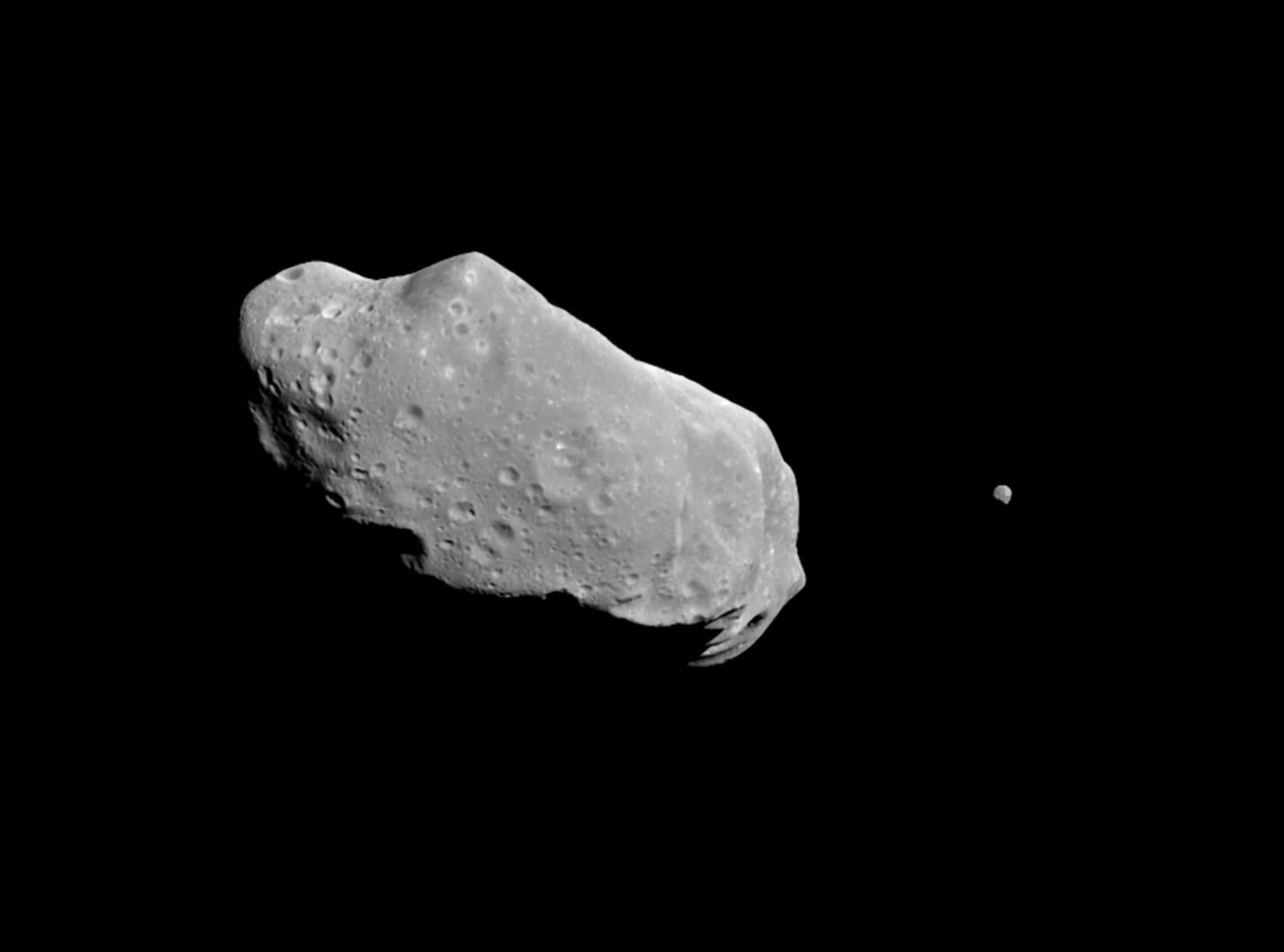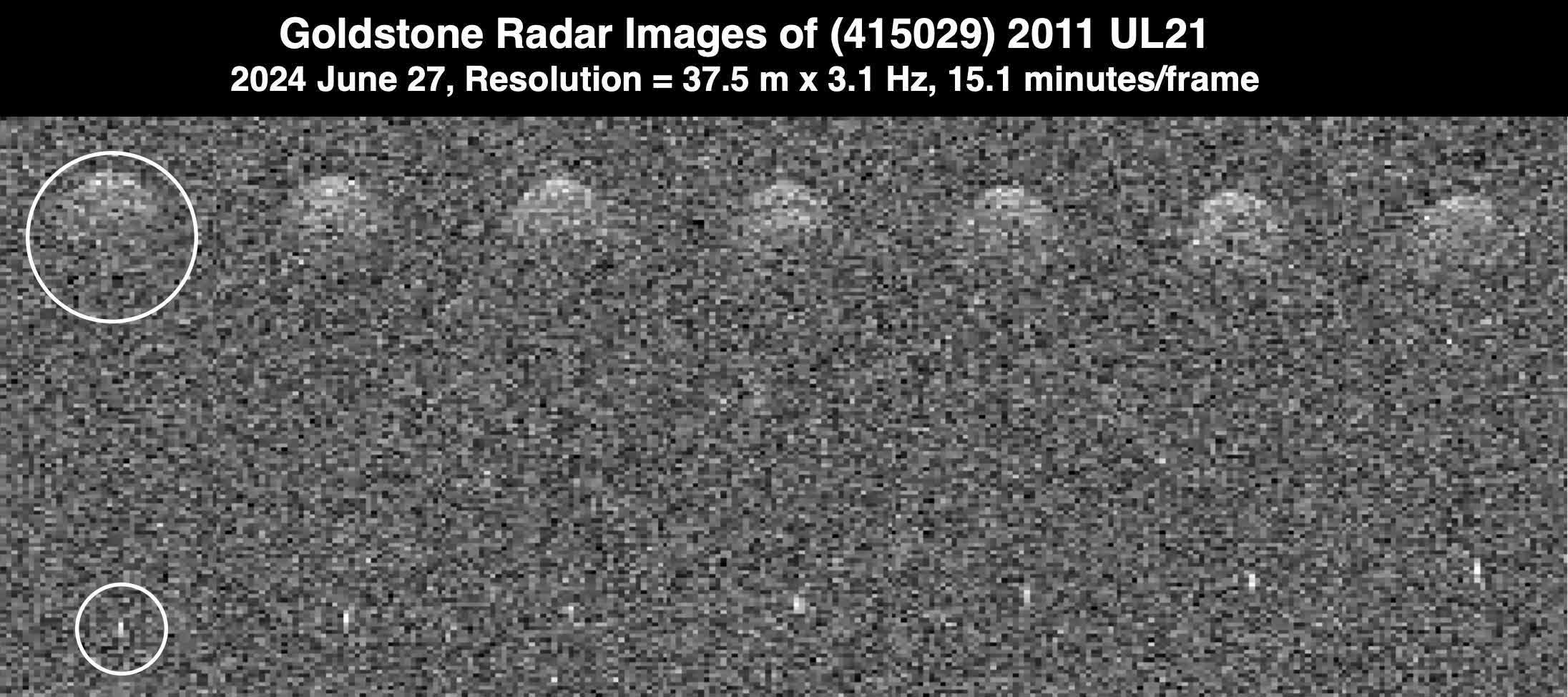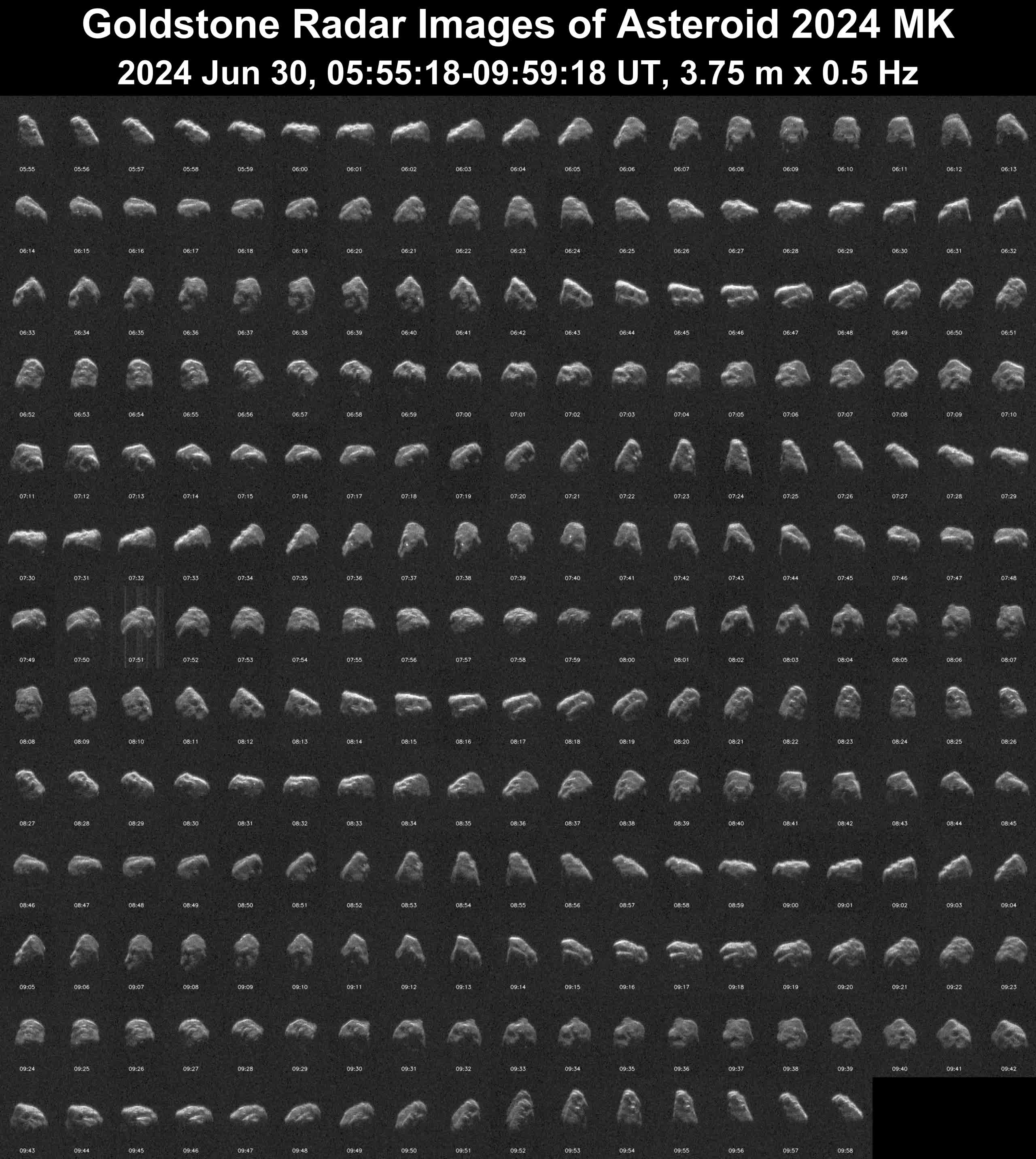What just happened? NASA struck gold late last month when it captured a hefty asteroid flying past Earth, giving us a closer look at the rock — and its accompanying mini-moon. The images, captured by the Goldstone radar dish, show “2011 UL21” in detail as it approached one of the closest asteroids of the year on June 27.
This giant space rock was first spotted in 2011 by the NASA-funded Catalina Sky Survey in Tucson when it flew past. It’s estimated to be about a mile wide. But this time, it flew close enough to be captured by radar. The real surprise, though, was the tiny moon orbiting the asteroid at a distance of about 1.2 miles.
According to NASA scientists, it is quite common for large asteroids like this to be binary systems with one or more small moons in their wake. But actually spotting them is far from easy.
“About two-thirds of asteroids this size are thought to be binary systems. Their discovery is significant because we can use measurements of their relative positions to estimate their orbits, masses and densities, providing important information about how they might have formed,” said Lance Benner, chief scientist at JPL (Colophon: asteroid 243 Ida and its moon).
The Goldstone Solar System Radar’s massive 230-foot dish, the world’s largest fully steerable radar antenna, has been scanning the skies from California’s Mojave Desert for three decades. This powerhouse has powered countless missions, including Mars rovers, Saturn’s Cassini, asteroid explorers Hayabusa and even the sun-watching SOHO probe.
Scientists at the Jet Propulsion Laboratory used the same antenna to beam radio waves toward the asteroid and receive the reflected signals. The high-resolution radar images also gave us a better look at UL 21’s nearly perfectly spherical shape and surface features such as craters. While it’s grainy, it’s not bad for an object that passed within 4.1 million miles, or 17 times the distance to our moon.
As if one cosmic photo wasn’t enough, the Goldstone team also captured another asteroid, 2024 MK, just a few days later on June 29. This smaller, 500-foot rock zoomed much closer, at 184,000 miles, within 75 percent of the Earth-moon distance. You can view the images in full resolution in NASA’s press release.
The images provide a detailed look at 2024 MK’s battered surface, including craters, ridges and boulders measuring up to 30 feet across. While not nearly as large as 2011 UL21, it was still a relatively tight affair.
NASA says these close encounters help study potentially dangerous asteroids and prepare for planetary defenses. The more data we have about their orbits, spins and physical makeup, the better we can predict and prepare for future threats.
“There was no risk that either of the two objects that passed close to Earth would hit our planet, but the radar observations made during these two approaches will provide valuable knowledge for the defense of our planet,” the team said.


